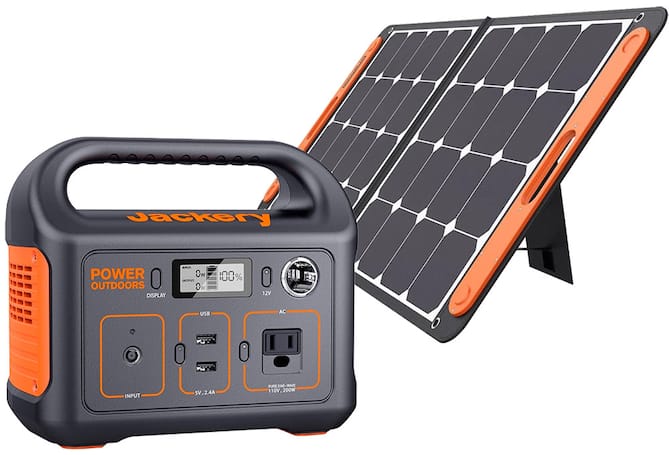Differences Between a Solar Generator and a Power Bank

Best Selling Products carousel(5 Items)
What is a solar generator?
What is a solar generator used for?
Perfect for on-the-go, the most common uses for a solar powered generator include:
- Camping and outdoor activities. Solar generators are popular among campers, hikers and other outdoor enthusiasts who like to get away from it all while still enjoying modern conveniences. Smartphones, electric bikes, cameras and other electronics can stay charged and powered when you need them the most.
- Power outages and emergencies. A reliable source of electricity is crucial during power outages and emergencies. Essential appliances, such as lights, medical devices, small refrigerators and communication devices can all be powered by a solar generator.
- Recreational vehicles. Solar generators offer a clean and sustainable source of electricity for powering appliances, lighting, air conditioning and other electrical devices in recreational vehicles, trailers and boats.
How do solar generators work?
Portable solar power generators require a solar panel in order to collect energy. Solar panels are made up of photovoltaic (PV) cells that are able to convert sunlight into electricity. When the PV cells are exposed to sunlight, they generate a direct current (DC) electrical charge.See Disclosure 1 This electrical charge is then regulated by a charge controller, which is responsible for managing the flow of electricity from the solar panel to the generator.
The battery inside the solar generator stores the electricity, allowing it to be used when needed. A device in need of power can connect to the generator’s outlet to begin extracting the electricity. However, first the DC charge must be converted to an alternating current (AC) through an inverter, since AC is the standard form of electricity used on most appliances and devices. After powering up, the solar generator can recharge as long as sunlight is available, storing electricity for the next time you need it.
What is a power bank?
What is a power bank used for?
Even though power banks are smaller than solar generators, they are both used for the same purpose—to supply power. The most common uses of a power bank include:
- Mobile device charging. Mobile devices can conveniently be recharged with a power bank when you’re on the move and a wall outlet is inaccessible. This proves to be most useful during long flights, road trips or when you are in a remote area.
- Emergency power backup. Similar to solar generators, power banks are great resources during an emergency. However, instead of supplying power to heftier appliances and devices, a power bank can keep smaller essentials charged, like rechargeable flashlights and radios.
- Hikes and bike rides. A power bank can be an invaluable resource if you are on the trail for too long and need to charge up your headphones, smart device or fitness tracker. The slim, lightweight design of a power bank makes it easy to keep handy in a backpack or bike caddie.
How do power banks work?
Unlike a solar generator, power bank chargers do not rely on the sun for energy. Instead, power banks store electrical energy in built-in rechargeable batteries and then deliver that stored energy to other devices when needed. So, for a power bank to work, it first must be connected to a power source and charged itself. Most power banks have built-in charging circuitry that protects the batteries and prevents them from overcharging.
A power bank can be taken practically anywhere once it is charged up. When you are ready to use the power bank, the power transfer process is incredibly simple. You just connect a device of your choice to the power bank with a USB cable or other charging connector. Then, the power bank’s circuitry detects the connection and activates the power transfer.
Solar generators vs.power banks
If you are looking into purchasing a portable solar generator or are wondering how to buy the best power bank, you must first determine what your needs are. A solar powered generator stores more energy and is better suited to supply ample amounts of power to small appliances and other devices, like lanterns, cordless power tools, fans and electric grills. The slimmer power bank, however, is easier to carry around and is more commonly used to charge smaller devices, such as smartphones, tablets and handheld gaming consoles.
Both solar generators and power banks offer portable, convenient solutions for powering electronic devices. Whether you opt for the eco-friendliness and larger power capacity of a solar generator or the practical efficiency provided by the power bank, your electronic devices will be charged up and ready to go when you need them the most.